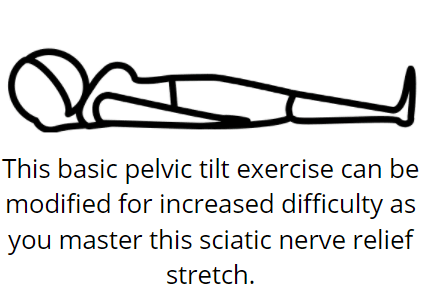Pain, weakness, numbness, or tingling along your back, buttocks, or down into your leg, toes, and heel could be “sciatica.” Sciatic pain is no joke, and it often builds over time. Thankfully, patients can often find long-term and effective relief with a series of at-home stretches for sciatica.
Sometimes, at-home stretching is not enough, and some people benefit from help from a specialist. If you are one of those people, reach out to us immediately for professional assistance relieving sciatic pain.
Do You Have Sciatica?

“Sciatica” is not a single medical condition, ailment, or injury. Instead, the term describes a combination of symptoms that affect the sciatic nerve, which is the body’s largest nerve. It branches out from the spine, running through the hips and down both legs.
Sciatic pain is described as numbness, aching, tingling, pinching, or burning sensations. For some people, sciatic pain is mild and infrequent, while for others, it is constant and severe.
Sciatica is caused by several physical factors. When you don’t stretch the sciatic nerve, it shortens and tightens, which causes pain in the lower back (lumbar), hips, and backs of the legs.
Commonly, sciatica is caused by a herniated disk, bone spur, or other compression on part of the spinal nerve. However, pregnancy, heavy lifting, poor posture, obesity, a sedentary lifestyle, or even stress can be factors in hip and lower back problems.
In America, adults spend an average of ten hours per day sitting. Extended periods of sitting often result in tight, weak glute muscles, which pull the upper and lower body out of alignment, causing aggravated sciatica symptoms.
Your glutes are the largest muscles in your body and should be the strongest, however, if they aren’t stretched regularly, you’ll find yourself needing to try glute stretches for sciatica relief.
Should You See a Doctor?
Everyone experiences some “back pain” or “leg cramps,” so when is it severe enough to seek medical attention? Consult a doctor if:
- Mild-to-moderate symptoms persist for two weeks, even with daily stretching.
- You have sudden, severe pain, numbness, or muscle weakness in your lower back or leg.
- You have difficulty controlling your bladder or bowels.
A physician will evaluate your symptoms and provide an accurate diagnosis and treatment options, including exercises and stretching to relieve sciatica. Physical therapists or chiropractors can provide assistance and direction on performing the best, most effective stretch exercises for sciatic pain.
Safety Considerations for Sciatica Stretches
Every patient is different. The stretches and exercises recommended here may not work for everyone. While stretching may bring some people relief from sciatica pain, all therapeutic stretches must be performed correctly for best results. Also, every stretch may not work for every person.

It’s very important never to rush or shortcut your stretching and exercise routine. Never push yourself through sciatic nerve pain stretches that you don’t feel capable of doing.
You should feel a slight “pulling” as your muscles move beyond where they’re accustomed to moving. However, if you feel dizzy, lightheaded, or like something is “tearing,” relax and breathe deeply.
Proper form is essential, and while the goal is ultimately to lengthen the muscles and connective tissues to relieve pressure on the sciatic nerve, you will only hurt yourself if you “force” yourself too far in a stretch.
When it comes to stretching to relieve sciatica pain, consistency and commitment are more important than increasing the difficulty. You don’t need to “reach farther.” You need to “stretch deeper.”
It is crucial that you find an exercise program that feels right and comfortable for you. Professional, customized guidance from sciatica specialists like those at Heart of Texas Chiropractic provides the most effective plan for eliminating sciatica from your life.
Consult with your doctor before you try sciatica stretches and exercises at home. If, at any point, you feel sharp pain or lingering discomfort from these exercises, stop immediately and consult your physician or a sciatica specialist.
At Heart of Texas Chiropractic, we are available to answer your questions regarding stretching exercises for sciatica pain relief.
Exercises and Stretches to Help with Sciatica Pain
If you’re wondering how to stretch your sciatic nerve to alleviate pain, the most important tip to remember is: Slow and steady wins the race.
Sciatic stretching is all about increasing your body’s mobility. You didn’t become less mobile overnight, and you won’t increase your mobility overnight, either. Most stretches for sciatica pain relief target the lower back, hips, and hamstrings, although you may also find it useful to exercise your core and abdominal muscles for best full-body results.
Exercising and stretching for sciatica aims to achieve the following:
- Improve range of motion and mobility
- Promote soft tissue healing & muscle conditioning
- Enhance sciatic nerve function
- Minimize or prevent painful flare-ups
Perform these stretches at least twice per day, every day for one week, to begin experiencing the full benefits of these sciatica pain treatment exercises.
Sciatica Pain Relief Stretch 1: Knee-to-Chest

This is what to do for sciatica pain in hip flexors and quads.
Method
- Lie on your back on the floor, with both legs extended and flat.
- Gently pull one knee to your chest with your hands, while keeping the other leg on the floor.
- Hold the bent leg toward your chest for 10 seconds.
- Release the bent leg and lower it to the floor.
- Pull the other knee to your chest and hold for 10 seconds.
- Repeat 4–5 times with each leg.
- Or, you can simultaneously pull both legs toward your chest and holding them for 10 seconds, then repeat 4–5 times.
This knee-to-chest exercise alleviates chronic low back pain and improves the range of motion and stability of your lower pelvis.
Sciatica Pain Relief Stretch 2: Pelvic Tilt

This sciatic nerve stretching technique is a rehabilitation exercise that strengthens core muscles.
Method
- Lie on your back with knees bent, feet flat on the floor, and arms at your sides, with palms down.
- Tighten your abdominal muscles and keep your back flat while raising your pelvis slightly.
- Hold for 10 seconds then lower your pelvis.
- Repeat 10–12 times.
This basic pelvic tilt exercise can be modified for increased difficulty as you master this sciatic nerve relief stretch.
Sciatica Pain Relief Stretch 3: Standing Hamstring Stretch
Use caution for this sciatica stretch. Don’t exert yourself. Hold on to something if necessary.
Method
- Place your left foot in front of your right, with toes flexed.
- Keep the left leg straight while slightly bending your right knee and pulling your stomach inward.
- Lean forward slightly from the hips, with palms resting on your right thigh for balance.
- Keep your back straight and shoulders down.
- Hold for 30 seconds and release.
- Repeat 3–4 times with each leg.
Don’t lean forward too much. If you lose balance or your lower back feels strained, stand up slightly. Keep your back as straight as possible.
Sciatica Pain Relief Stretch 4: Glute Bridge
Method
- Lie on your back with your knees bent, feet flat on the floor, and arms on your sides with the palms downward.
- Raise your hips until they are aligned with your knees and shoulders.
- Hold this position with your stomach muscles engaged for 5 seconds.
- Gently lower your hips.
- Repeat 15–20 times.
The glute bridge is one of the most effective sciatica hip stretches. Including this exercise in your regular routine strengthens the lower back and improves hip mobility.
Sciatica Pain Relief Stretch 5: Sciatic Nerve Glide
Stretches for sciatica nerve increase the blood flow to your back and leg muscles, improving your posture, balance, and range of motion.
Method
- Sit upright with your back straight and shoulders relaxed.
- Straighten one knee while keeping the other foot flat on the floor.
- Raise the foot as far as you can without discomfort.
- Flex and release your ankle 10 to 15 times for sciatica ankle pain relief.
- Ease your knee down and repeat with the other leg for 2–4 rounds.
As your pain decreases, you may discover you can perform sciatica pain relief stretches you couldn’t achieve before. Keep up the great work!
When Stretching Exercises for Sciatica Pain Relief Aren’t Enough, Seek Professional Care
Gentle sciatica stretches and exercises for sciatica pain in hip, lower back, and buttock muscles can be lifechanging. Performing sciatica pain relief stretches regularly also enhances your range of motion, increases your strength, and improves stability in your core, spine, and legs.

While these at-home exercises and stretches for sciatica can help prevent flare-ups, pursuing long-term sciatica treatment is the most effective way to eliminate your day-to-day hip, back, and leg pain. Sciatica ruins lives. But it doesn’t have to affect yours.
An experienced sciatica specialist can evaluate and diagnose the root of your problems. Then your customized sciatica treatment and recovery plan will guide you through the step-by-step process to ending that pain and taking back control of your body. Make life better. Live free from pain.
Reach out to us. Relieving sciatic pain is one of our specialties. At Heart of Texas Chiropractic clinic, we can help you put an end to your sciatica.
